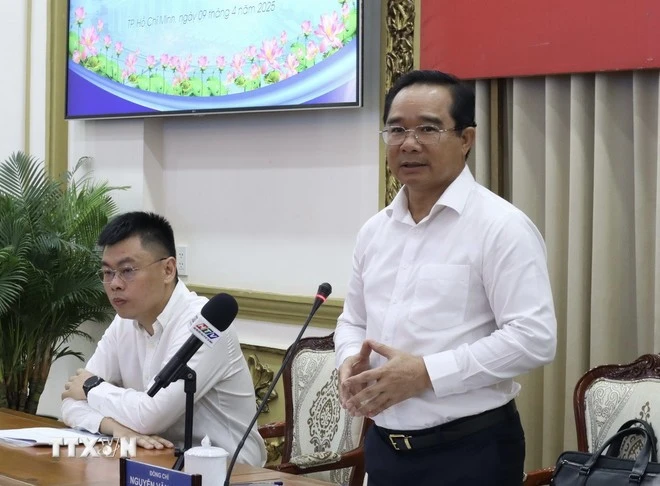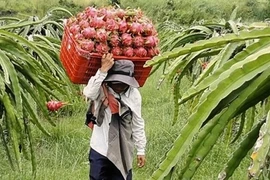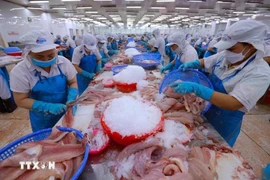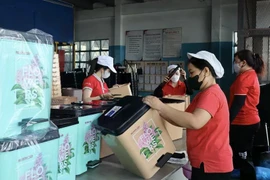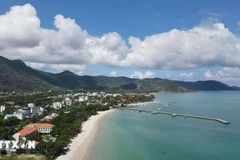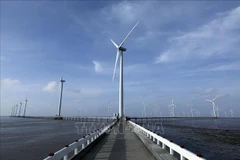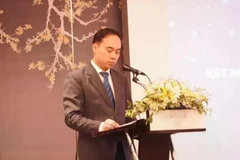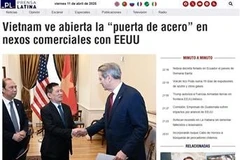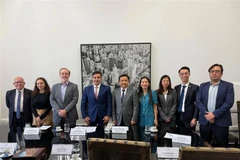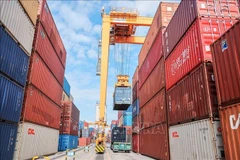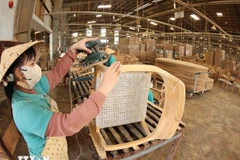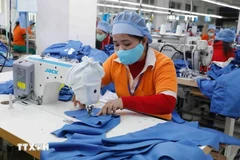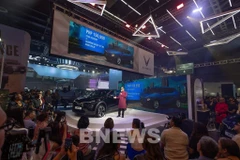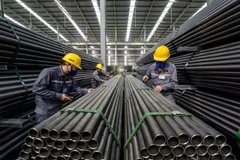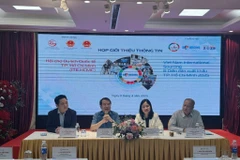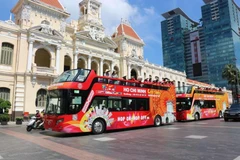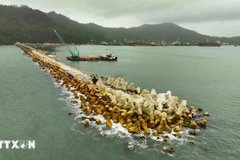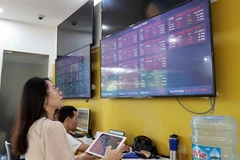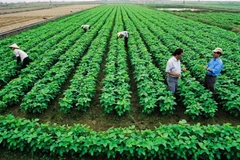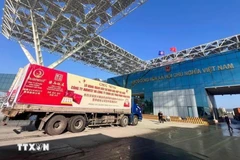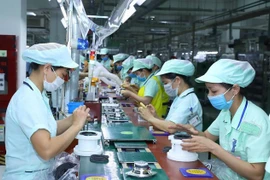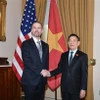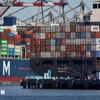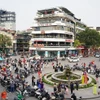HCM City (VNA) – As Vietnam’s economic locomotive and the export gateway of the southern key economic region, Ho Chi Minh City was advised to proactively develop growth scenarios and ready response plans in anticipation of varying outcomes from ongoing tariff negotiations between Vietnam and the US.
Experts and businesses made the recommendation at a seminar held by the municipal People's Committee on April 9 to discuss the city's economic growth amid the new US tariff policy.
Direct impact
According to the municipal Department of Industry and Trade, the US has for many years been the city’s second-largest export market, after China. Between 2016 and 2024, HCM City’s exports to the US peaked at 7.4 billion USD in 2024, representing a growth rate of 24.27%. Leading export categories included computers, electronics and components, textiles and garments, and machinery and equipment, all surpassing USD 1 billion in value.
Among these, five product groups are projected to suffer significantly under the high reciprocal tariffs. Textiles and footwear alone account for around 21% of the city’s exports to the US. The new tariffs could lead to further order declines, placing considerable strain on businesses and workers in the footwear industry.
The wood and furniture sector, which makes up around 8% of export value, is also forecast to see a sharp drop in orders and may be forced to scale back production. In the long term, Vietnam risks losing market share to competitors such as Mexico and Indonesia.
Particularly at risk is the electronics and components sector, currently accounting for approximately 20% of the city’s export value. Domestic component suppliers and assemblers based in the city could face cascading impacts, including the potential loss of contracts should partners shift their supply chains elsewhere.
Feedback from the business community indicates that if reciprocal tariffs reach 46%, many exporters may be forced to drastically reduce shipments or temporarily suspend exports to the US to avoid financial losses. As a result, HCM City’s exports to the US in the second and third quarters of 2025 may decline. Even if the tariffs remain unchanged, US partners might delay or cancel orders due to concerns about rising prices.
Over the long term, labour-intensive sectors will face direct consequences, potentially leading to increased unemployment, reduced working hours, and weakened consumer demand in the city. This could stall the city's export growth, jeopardising its overall economic growth.
Speaking at the seminar, Truong Minh Huy Vu, Director of the HCM City Institute for Development Studies, noted that the city has consistently maintained a substantial trade surplus with the US from 2020 to 2024. In 2024, exports to the US hit a five-year high of 7.8 billion USD, while imports from the US fluctuated between 2.1 and 3 billion USD, generating a stable annual trade surplus of 4.1–5.2 billion USD.
According to Vu, while the US has announced a 46% reciprocal tariff on all imports from Vietnam, it has not yet disclosed specific implementation details. Both governments remain in the negotiation process. Based on three possible negotiation outcomes, the institute has outlined three growth scenarios.
In the first and most severe scenario, should the US maintain the full 46% tariff across all Vietnamese goods, trade tensions would escalate, and HCM City’s exports could stagnate in the short term. The city’s GDP growth in 2025 is projected to fall within the range of 4.63–5.75%, averaging 5.19%. Under a more moderate scenario, if a bilateral agreement is reached with an average tariff rate of 25% and a grace period to allow businesses to adjust, the city could achieve growth between 6.23% and 7.35%. In the most optimistic scenario, should the reciprocal tariff be reduced to between 5% and 15%, overall export performance across major markets would improve, pushing HCM City’s economic growth to between 7.37% and 8.49%, with an average of 7.93%.
These projections assume that while exports may be impacted, other key growth drivers such as public investment and domestic consumption remain robust.
Proactive response measures
Based on these scenarios, the institute has proposed a number of solutions to mitigate the negative impact of the reciprocal tariff policy. For trade activities, Vietnam must pursue active bilateral negotiations to ease tensions, including offering reciprocal concessions such as lowering import duties on US goods and tightening control on origin fraud. Efforts should also be made to import more high-tech goods and diversify export markets.
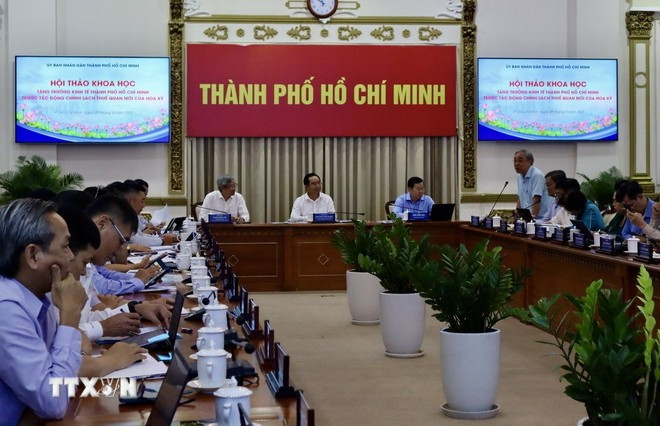
It is necessary to eliminate non-tariff barriers affecting US imports, such as simplifying or removing administrative procedures related to product labelling, plant and animal quarantine, and customs clearance processes. The city must also enhance intellectual property protections and pursue bold judicial reforms.
Parallel to supporting exports, it is essential to stimulate domestic consumption by expanding distribution networks, improving logistics infrastructure, and facilitating broader goods circulation both nationwide and across neighbouring countries. Investment attraction measures should focus on improving the business environment to draw both private and foreign direct investment.
Professor Tran Ngoc Anh of the US-based Indiana University commended the Vietnamese Government and HCM City authorities for proactively seeking solutions to address the sudden imposition of US reciprocal tariffs. He noted that the 46% rate is more of a strategic bargaining tool employed by the Trump administration rather than a fixed policy. While various levels of negative impacts are inevitable, Vietnam, and HCM City in particular, should seize this moment as an opportunity to restructure the economy, industries, and export markets.
Rather than focusing solely on increasing export value, according to him, Vietnamese businesses should shift toward higher market segments and promote service exports as the US tariffs target goods, not services. Domestically, the country should make use of this period to upgrade its technological capabilities and reform administrative procedures to enhance business competitiveness, he noted.
Chairman of the HCM City People’s Committee Nguyen Van Duoc stressed that the city’s economic growth plays a vital role in Vietnam’s overall development. Export activities in the city are intrinsically linked to other localities in the southern key economic region, serving both as a major consumer of input materials and an export hub. As such, the city must maintain a proactive stance and provide timely support to its business community, he noted.
In the immediate term, HCM City will maintain its current growth target of 8.5% for 2025 as set at the beginning of the year. Departments and sectors are closely monitoring the operations of export enterprises, particularly those trading with the US, to recommend timely support measures.
Looking ahead, the official added, the city will restructure its trade promotion programmes to focus on key markets and ensure tangible benefits for enterprises. It will continue to boost public investment to lead growth, especially in expanding the transport network and development capacity.
On the business side, firms should proactively research market demand and collaborate with US businesses in Vietnam to build distribution networks in the US. Moreover, they must take responsibility in preventing transshipment and origin fraud to reduce future trade risk./.
